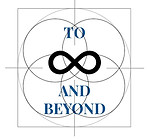The use of supercomputers to recreate and unearth the mysteries that surround our
universe, right from its birth, was transformed into reality by Daniel Reynolds, an assistant mathematics professor at SMU, back in 2010, when he developed a mathematical model that simulates the events that occurred in a particular time period known as the ‘Dark Ages.’ This National Science Foundation(NSF) project was done in collaboration with astrophysicists at the University of California, San Diego.
The "Dark Ages"; took place in the timeline shortly after the occurrence of the Big Bang. It is referred to as the period before the first stars illuminated the universe, which is 380,000 years to 400 million years after the birth of the cosmos.
According to Reynolds, the mathematical models comprise a number of mathematical
equations that represent certain physical processes, all of which are tightly coupled together to provide simulations of the highest accuracy and numerical stability. The different physical processes include those that are present during cosmic reionization, some of which are gas motion, dark matter dynamics and chemical kinetics.
"Supercomputers are so big, they hold so much data, you can build models that work
with many processes at one time," Reynolds says. The number of equations that need to be processed by a simulation model are generally huge, and must reflect the individual interactions between the physical processes too! This is why supercomputers must be used; only they can simultaneously solve these complex equations.
Apart from the numerical equations themselves, the variables that will be entered in the
model also have to be taken into account. Reynolds mentions that the objective is to achieve a set of variables that results in a universe that closely resembles ours. And by accomplishing that, the scientists will have unlocked the set of physical processes that occurred during the Dark Ages. It isn’t just the processes themselves that we consider, but also the combination of those non-linear processes when they’re combined.
The team was able to successfully test out their mathematical model, with funding from
the NSF, on ‘Ranger’ at the University of Texas at Austin and on ‘Kraken’ at the University of Tennessee – two of the largest existing NSF supercomputers.
As of 2019, Peter Behroozi, an assistant professor of astronomy at the University of
Arizona, and his team created their own universes using a supercomputer’s 2000 processors continuously over three weeks to simulate more than 8 million universes. And, mind you, each one is different from the other!
With newer and more efficient mathematical models and simulations, we can look
forward to witnessing our past in the near future as we take another step towards exploring the start of our universe and everything else that bloomed after.
By Avneet Kaur
Acknowledgements:



